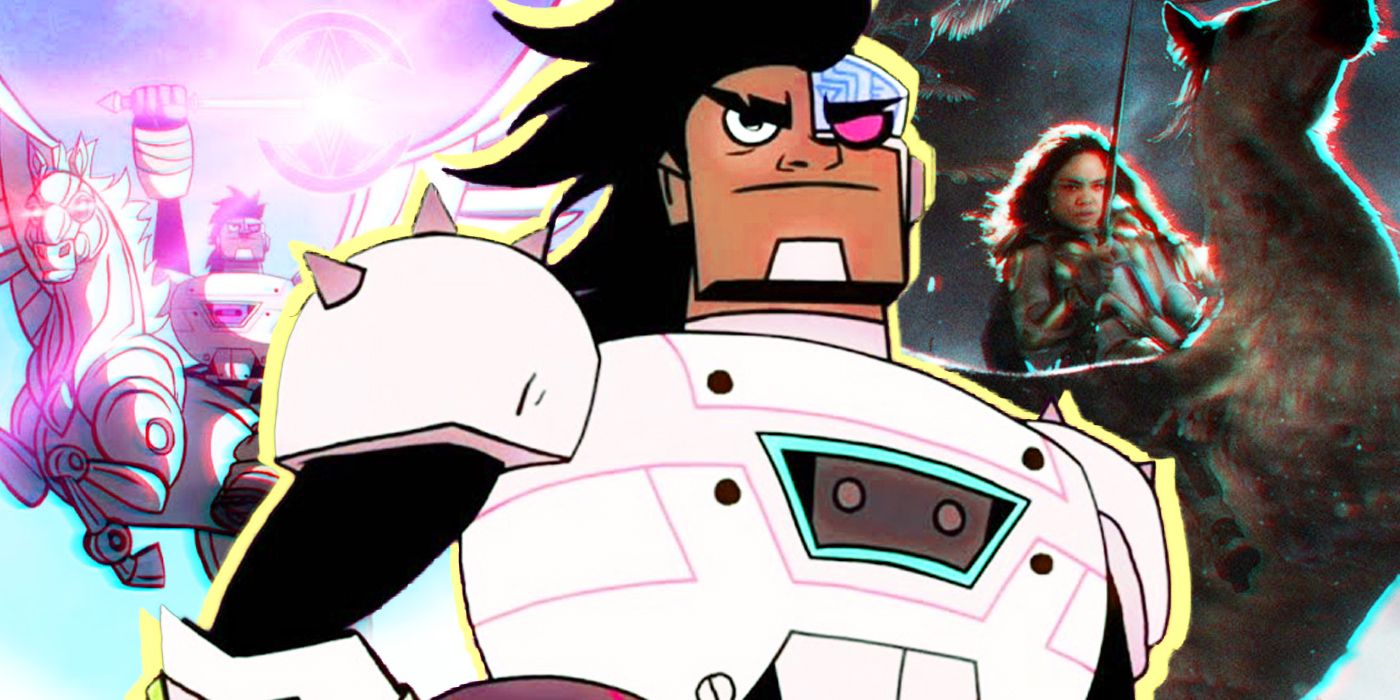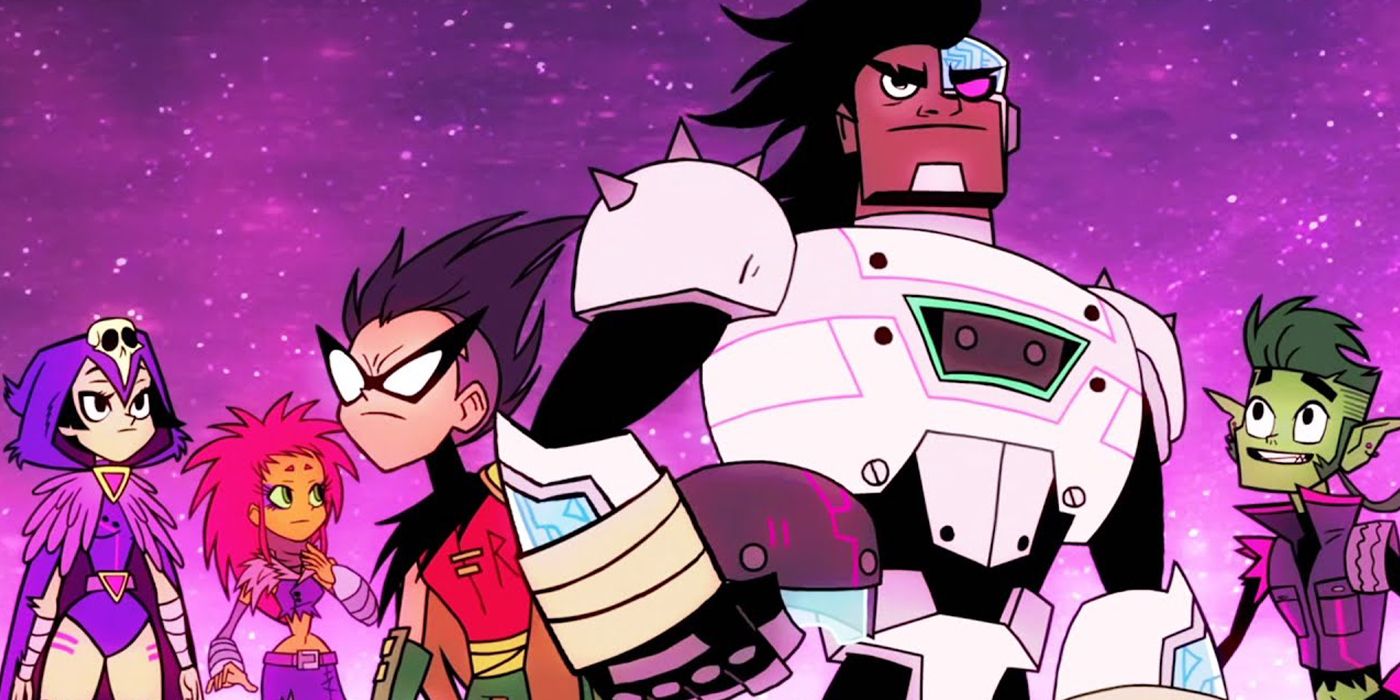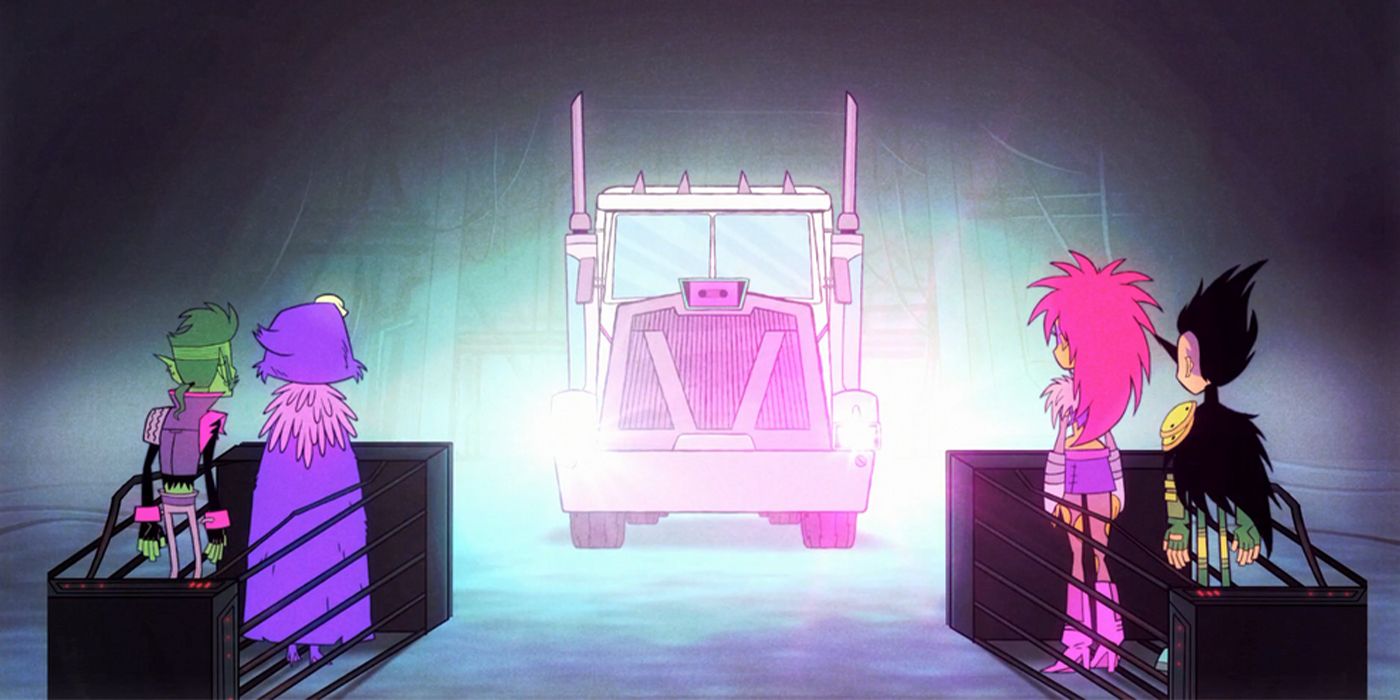Teen Titans Go! is known for its parodies as the small-screen heroes tend to find themselves in not-so-heroic situations. Perhaps their most talked-about adventure is in the colorful, synth blasting world of "The Night Begins to Shine," a four part mini-series within the cartoon.
Here, the Titans return to the lands of Cyborg's favorite song, and it's no wonder fans of the show want more of this radical take on the heroes. Contemporary media that references or reinvents '80s pop culture has found immense popularity over the past few years, as seen with Thor: Ragnarok, which feels like it could fit in with the popular sci-fi epics of that time period. This film re-introduced the God of Thunder in a lighter, more comedic tone two years after the Titans' first trip to Cyborg's synth filled fantasy. Furthermore, when comparing the two separate works, one notices parallels to the style and story.
In Teen Titans Go! Season 3, Episode 10, "40%, 40%, 20%," Cyborg's favorite song, "The Night Begins to Shine" by B.E.R., sparks a neon-punk world that comes from the power of the Titan's favorite song. It's also here that fans learn that Cyborg's strength comes from this song, not his technological enhancements. This world paints a colorful canvas that embodies '70s and '80s album covers, Tron and character designs from Mad Max.
As the episode unfolds, Cyborg's a lone rider in the open lands of the song, and he's on a mission to rescue the Titans. On his way, he encounters a giant cyber-wolf, who's absorbed into Cyborg upon contact, his pelt hanging off the Titan's shoulder afterwards. Seeing Cyborg take on this wolf, especially given its size and design, feels reminiscent of Ragnarok's Fenrir, Hela's undead wolf whom fights Hulk at the climax.
At the height of all the epic action, Cyborg also encounters a giant cyber-beast. The beast, which is somewhat resemblant to the Destroyer in the first Thor movie, pulls out a giant sword and slashes at the earth. This is when Cyborg's bike magically transforms into a majestic pegasus that he rides up the arms of the beast and obliterates it out of existence. Again, this imagery feels similar to a scene in Ragnarok, in particular Valkyrie's flashback to a battle with Hela, where she and her comrades take on the Goddess of Death as they ride their pegasuses.
Next, The Brain sends his flying skeletal-punk minions, which could fit in with DC's Parademons, to defeat Cyborg, but a golden, robotic eagle drops a katana into Cyborg's hands, which he uses to shoot a powerful blast that destroys the minions. Whilst not an obvious parallel, a magical weapon shooting a bright blue beam that destroys enemies is similar to Mjolnir's abilities in terms of visuals and devastation, with both heroes demanding all eyes on them as they wield their respective weapons.
Cyborg then pays a huge homage to Transformers -- specifically the leader of the Autobots, Optimus Prime -- and not so subtlety refers to himself as “Cyborgamous Prime" after transforming into a truck identical to the popular Transformer. In this form, he defeats The Brain and rescues his friends. The team then rolls out with the B.E.R. album cover filling the horizon as the song "The Night Begins to Shine" blasts dramatically in the background.
Whilst the visible parallels are many, the most important similarity between the Teen Titans Go! episode and Ragnarok is in fact the message. In Ragnarok, Hela breaks Mjolnir, and a devastated Thor learns that he isn't "The God of Hammers," but "The God of Thunder," giving viewers an electrifying climax at the end of the movie. Similarly, when The Brain rips out "The Night Begins to Shine" tape from Cyborg's chest and breaks it, Cyborg remains unmoved, as he too learns that the power of the song lives within him and not in a physical object.
This Teen Titans Go! episode and Ragnarok are not the same, and it's unlikely that the former influenced the latter directly. However, both sought out to achieve the same thing by telling an epic, radical story that is equal parts futuristic and nostalgic. By relying on similar iconography and a story about one's true worth, Ragnarok and "40%, 40%, 20%," easily won over fans.



